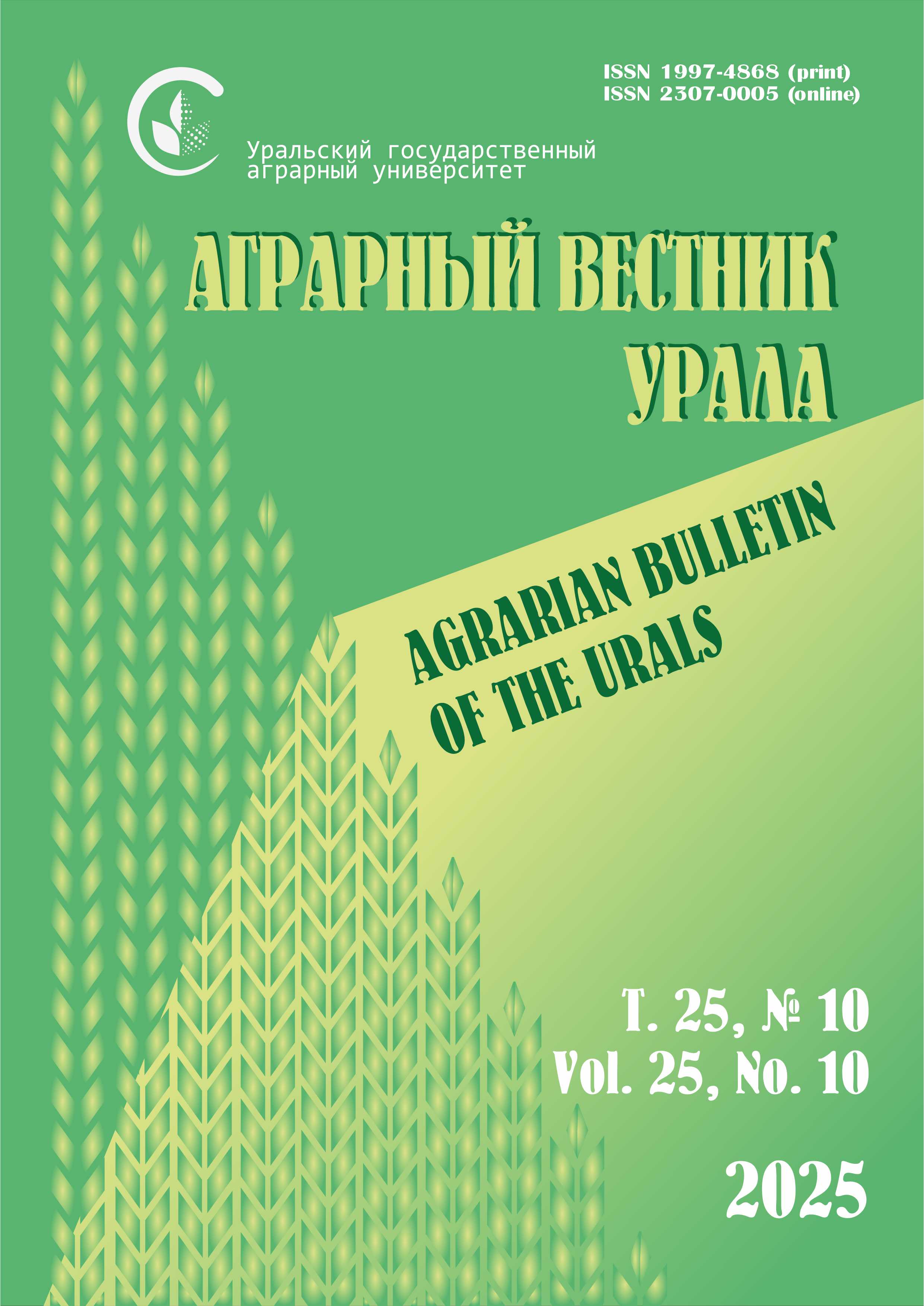V. A. Sapega
Industrial university of Tyumen, Tyumen, Russia
E-mail: This email address is being protected from spambots. You need JavaScript enabled to view it.
Volume 25 No. 1
Date of paper submission: 05.03.2024, date of review: 31.10.2024, date of acceptance: 02.12.2024.
Published: 01/31/2025
Abstract. The purpose of the study is to assess the efficiency of the state variety testing of oats in the Tyumen region, its varietal zoning, as well as the yield and adaptive potential of the varieties admitted to use. Methods. The study used materials on the varietal zoning of crops and the results of variety testing in the Tyumen region for 1999-2023, as well as data on the results of state testing of oat varieties for 2018–2023 in the northern forest-steppe zone. The coefficient of the index of environmental conditions (Ij ), stress tolerance (Y2 – Y1 ), yield variability (v, %), plasticity (bi ), stability (Si 2 ), homeostasis (Hom), genotypic effect (Ei ) and indicator of the level of stability of the variety (ILSV). Scientific novelty. The yield and adaptive potential of oat varieties zoned in the region was identified based on the use of various methods, when tested under various environmental conditions. Results. In total for 1999–2023 112 varieties of oats were tested and 4 varieties are allowed to use. Originator of all varieties allowed to use is the Federal Research Center “Tyumen Scientific Center Siberian Branch of the Russian Academy of Science”. There was a significant variability in the environmental conditions index, from –14.2 (2021) to 21.9 (2018). Under favorable environmental conditions (2018), high productivity potential was identified in varieties Tobolyak (103.1 %) and Foma (104.0 %), and in unfavorable (2021) – high adaptability in varieties Talisman (102.3 %) and Foma (119.3 %). The variety Tobolyak (38.5 c/ha) was the best in terms of average yield. Stress tolerance is low in all varieties: from –33.3 (Talisman) to –38.8 (Tobolyak), and yield variability is significant: from 34.9 % (Talisman) to 41.0 % (Megion). The variety Foma was characterized the highest responsiveness to changes in conditions (bi = 1.08), and the variety Talisman was characterized the stability of yield and homeostasis (respectively Si 2 = 1.12, Hom = 3.10). The variety Tobolyak was the best in terms of genotypic effect and stability (Ei = 2.5, ILSV = 150.0, respectively).
Keywords: variety testing and zoning of oat varieties, yield, stress tolerance, variability of yield, ecological plasticity, homeostasis and genotypic effect of oat varieties, indicator of the level of the stability of the variety, rank of the variety
For citation: Sapega V. A. Efficiency of variety testing of oats in the Tyumen region and assessment of the yield and adaptive potential of its varieties. Agrarian Bulletin of the Urals. 2025; 25 (01): 20‒30. DOI: https://doi.org/10.32417/1997-4868-2025-25-01-20-30 (In Russ.)
Download the full text of the article












